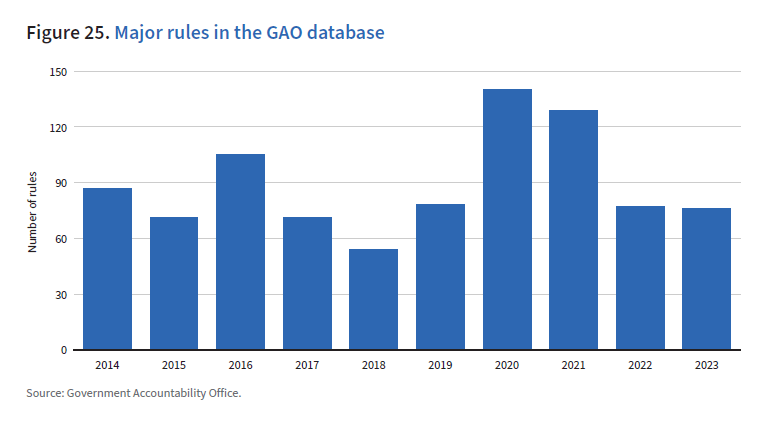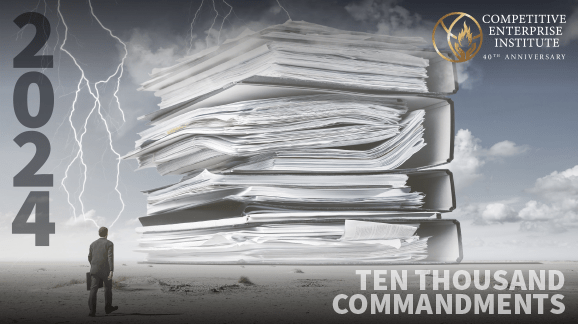Chapter 11: Government Accountability Office database on rules and major rules
The federal government’s regulatory reports and databases serve different purposes. The Federal Register presents all proposed and final rules affecting the private sector, as well as those involving internal government procedures or programs along with numerous presidential documents and notices. The Unified Agenda presents agency priorities with details about rules at various stages in the production pipeline and their economic significance.
Important information is compiled by the Government Accountability Office (GAO) as well. The 1996 Congressional Review Act (CRA) requires that agencies submit rules to both houses of Congress, as well as to the GAO, and for the GAO to prepare reports to Congress on the major ones—typically those with annual estimated effects of $100 million or more. Major rules can add burdens, reduce burdens, delay policy implementation, or set rates and standards for major government programs like Medicaid. Major guidance documents are also subject to the CRA but are rarely presented to the GAO or to Congress in a readily trackable way, and the submission form provided to agencies makes no note of them apart from an “Other” checkbox.
Interestingly for policymakers, given the CRA, the $100 million threshold that prevailed before Biden’s “Modernizing Regulatory Review” executive order in a certain sense remains intact; therefore, congressional monitoring of the major rule subset may assume added importance.
The CRA provides Congress a window of 60 legislative days to review a received rule and pass a resolution of disapproval. Despite the issuance of thousands of rules since the CRA’s passage, only one had been rejected before the Trump administration (a Department of Labor rule on workplace repetitive-motion injuries in 2001). Currently, just 20 have been overturned, the bulk of them during the Trump administration.

Owing to the CRA, one can monitor the thousands of final rules archived at the GAO each year, as well as track reports on those regarded as major. The comprehensive GAO database contained 88,730 rules through year-end 2023. Comparatively, as noted, the Federal Register and National Archives repository indicate 101,589 rules since the CRA’s passage. The database is important, but partial, as it appears that a failure to properly report final rules to both the GAO and to Congress as the CRA requires persists, a lapse that policymakers should address.
For the year 2023, the GAO database contains 2,129 rules received from departments and agencies, and 76 reports on major rules. Figure 25 depicts the number of major rule reports between 2014 and 2023 that policymakers might compare with final significant and completed S3F1 rules presented earlier. This report’s Appendix L presents agency detail on these rules back to 2003.
Recognizing that overlap occurs in transition years, totals and calendar-year averages of the number of major rules during recent administrations follow. Biden’s average annual number of major rules exceeds those of his three predecessors.
- George W. Bush (eight years): 492 major rules, average 62 rules per year
- Barack Obama (eight years): 675 major rules, average 84 rules per year
- Donald Trump (four years): 343 major rules, average 86 rules per year (includes deregulatory)
- Joe Biden (first three years): 282 major rules, average 94 rules per year
